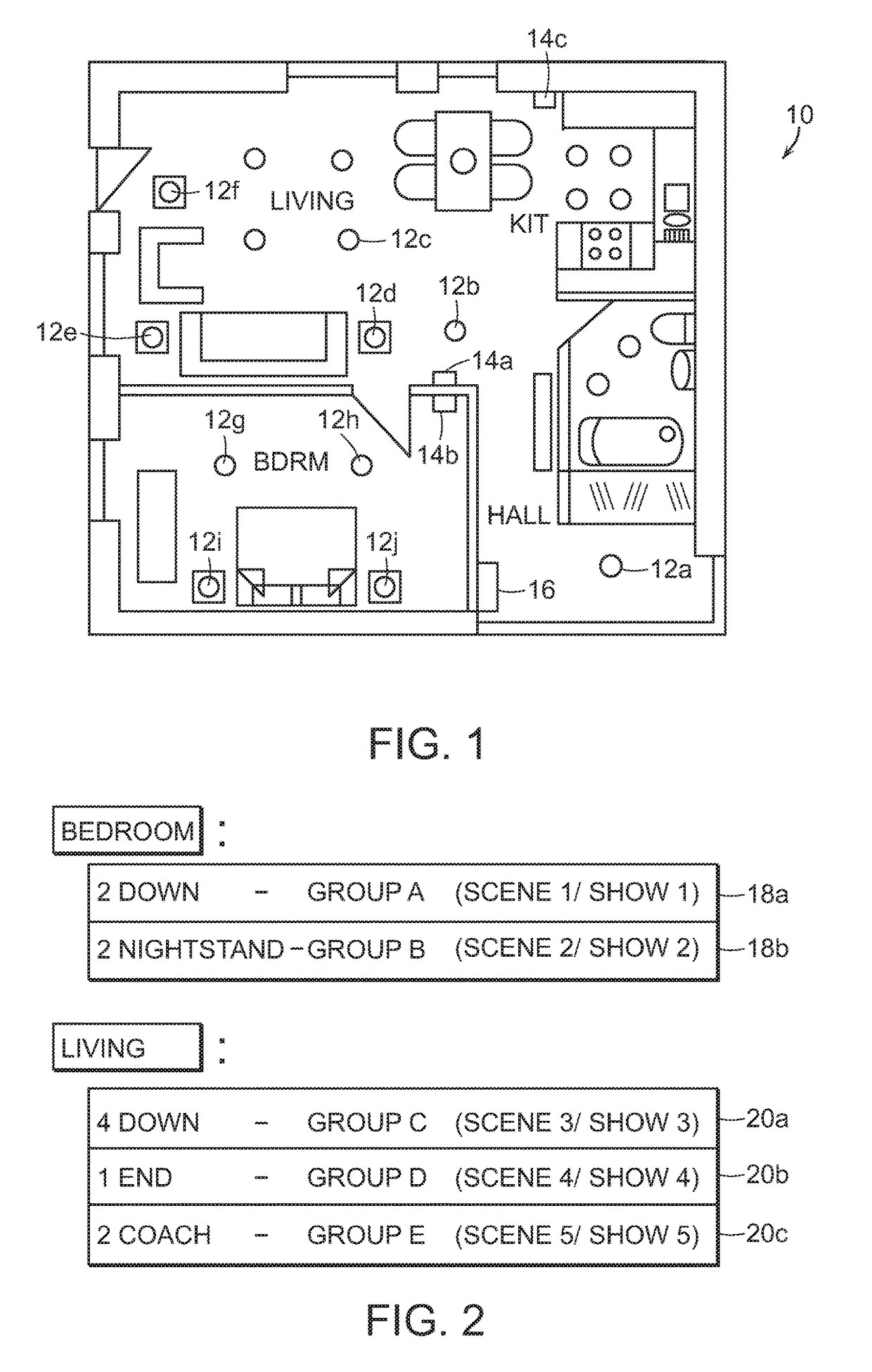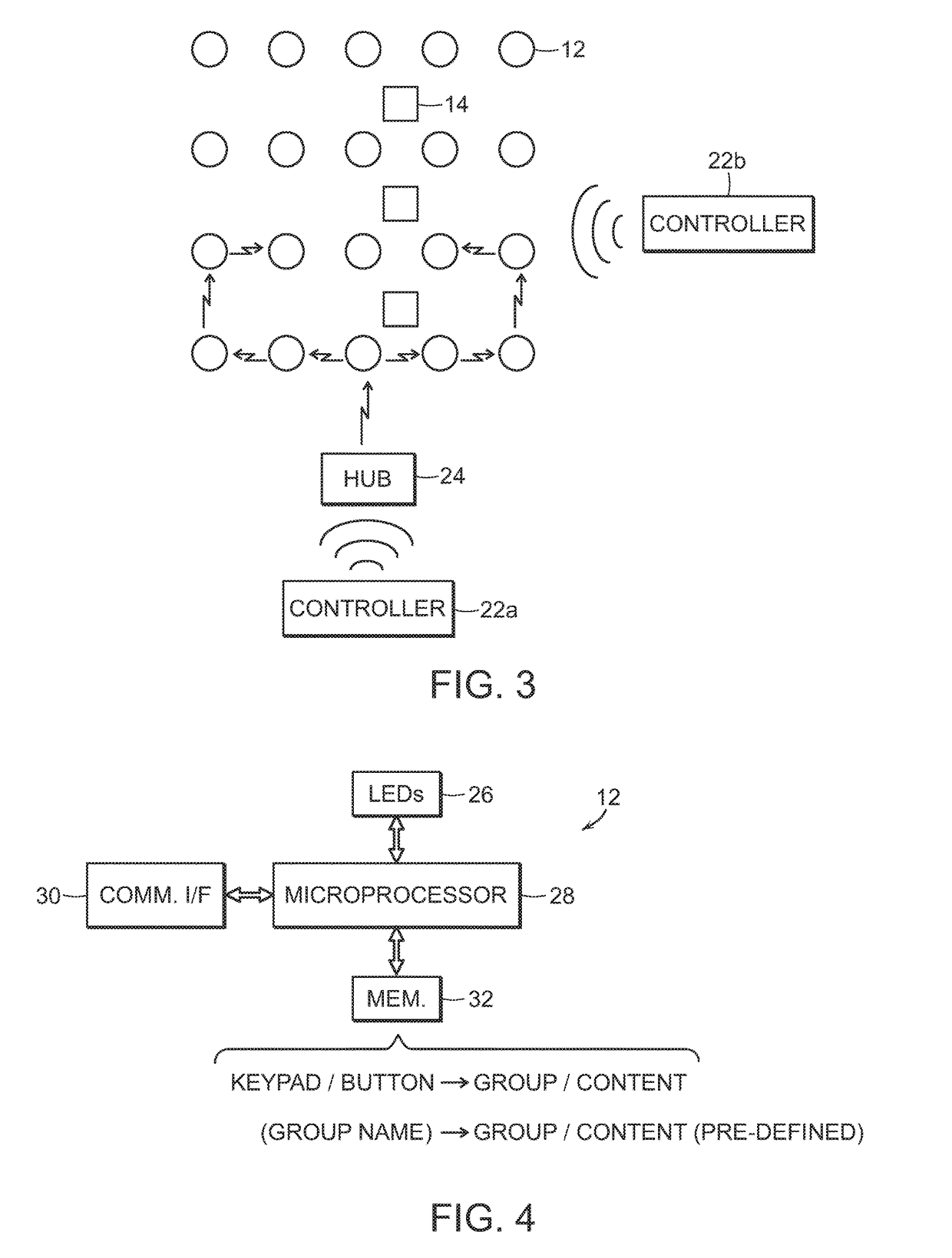System and method for ensuring minimal control delay to grouped illumination devices configured within a wireless network
a wireless network and control delay technology, applied in the field of illumination devices, can solve problems such as inability to assign scenes to groups
- Summary
- Abstract
- Description
- Claims
- Application Information
AI Technical Summary
Benefits of technology
Problems solved by technology
Method used
Image
Examples
Embodiment Construction
[0042]FIG. 1 illustrates an example of a residence 10 containing a plurality of physical lamps 12a, 12b, 12c, etc. The physical lamps are sometimes interchangeably referred to as simply lamps. Not all lamps are labeled for sake of brevity in the drawings. A residence may have numerous bedrooms, living rooms, rooms in general, and a significant number of lamps 12 can be arranged throughout that residence more or less than those shown in FIG. 1. Preferably, each lamp comprises at least one LED and a communication interface for a first communication protocol, that communication protocol being a wireless communication protocol used by all of the lamps 12 within, for example, residence 10. A popular first communication protocol can be WPAN using IEEE 802.15.4 and / or any protocol based thereon, like ZigBee. The lamps are arranged in the various rooms, and have a specified function based mostly upon their location. For example, lamps in the ceiling can be PAR lamps, whereas lamps in night ...
PUM
 Login to View More
Login to View More Abstract
Description
Claims
Application Information
 Login to View More
Login to View More - R&D
- Intellectual Property
- Life Sciences
- Materials
- Tech Scout
- Unparalleled Data Quality
- Higher Quality Content
- 60% Fewer Hallucinations
Browse by: Latest US Patents, China's latest patents, Technical Efficacy Thesaurus, Application Domain, Technology Topic, Popular Technical Reports.
© 2025 PatSnap. All rights reserved.Legal|Privacy policy|Modern Slavery Act Transparency Statement|Sitemap|About US| Contact US: help@patsnap.com



